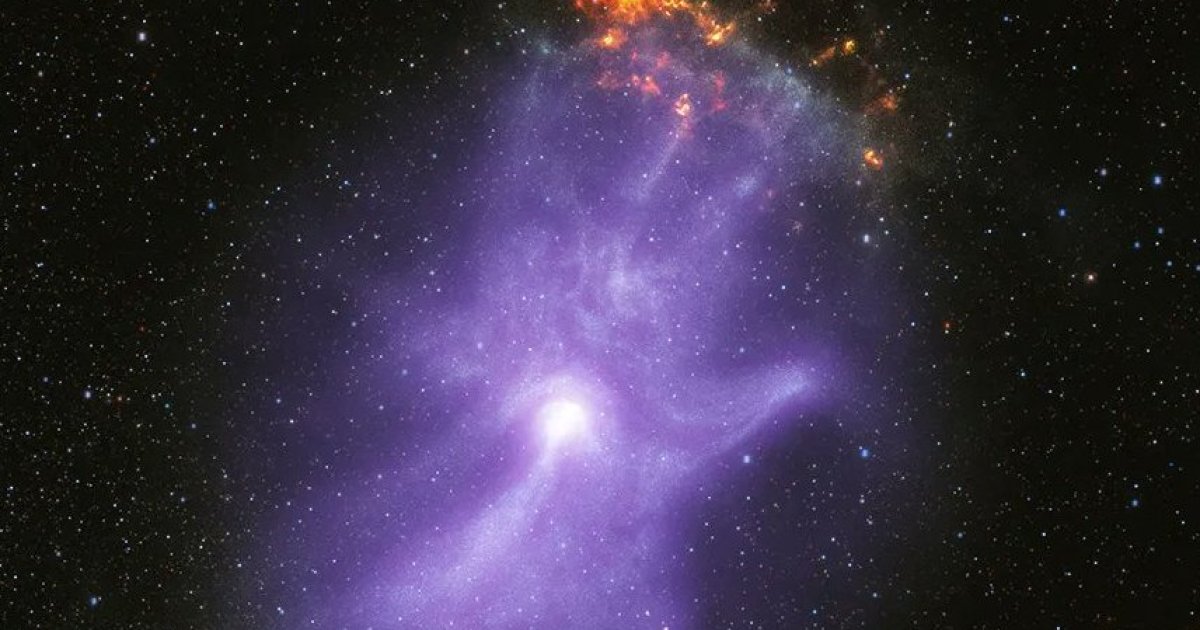
To mark Halloween, NASA has released a spooky image of what it describes as a “ghostly cosmic hand.”
It actually shows MSH 15-52, a cloud of energetic particles that resembles a human hand.
NASA’s Chandra X-Ray Observatory and Imaging X-ray Polarimetry Explorer (IXPE) telescopes worked together to capture the amazing image.
Chandra first observed the pulsar PSR B1509-58 in 2001, with scientists quick to notice how its pulsar wind nebula (MSH 15-52) bore a striking resemblance to a part of the human body.
Pulsar wind nebulae form from intense winds of particles and jets of matter flowing away from the poles of a pulsar, which is a highly magnetized and rapidly rotating collapsed star. The bright white spot near the base of the palm is the pulsar itself and is located around 16,000 light-years from Earth.
NASA’s newest X-ray telescope, IXPE, has studied MSH 15-52 for just over two weeks, which is the longest period of time it’s spent observing any single object since its launch in December 2021.
“The IXPE data gives us the first map of the magnetic field in the ‘hand’,” said Roger Romani of Stanford University in California, who led the study. “The charged particles producing the X-rays travel along the magnetic field, determining the basic shape of the nebula, like the bones do in a person’s hand.”
Commenting on the research, co-author Josephine Wong, also of Stanford University, said: “We’re all familiar with X-rays as a diagnostic medical tool for humans. Here we’re using X-rays in a different way, but they are again revealing information that is otherwise hidden from us.”
Astronomers are using X-Ray images like this to find out more about how objects like this form in deep space.
Editors’ Recommendations
